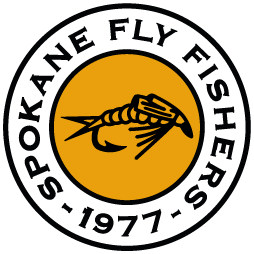One More for the Collectors. Fairly frequently, when out “antiquing” with my wife, I find old bamboo fly rods. I rarely actually buy but, occasionally, I’m baffled by a piece that has some odd handle, strange ferrules, or some other curiosity. I then leave with unsatisfied curiosity and a sneaking feeling that I might have missed something. Well, thanks to that wonderful donation by Mike Melmoth, we now have a volume that may well answer most of those questions!
Rod Crafting, by Jeffrey L. Hatton, leaps up at you the moment you see it, due in no small part to the marvelous photos of old rods on it’s cover. A quick perusal will make you want to quickly find time for a leisurely read from cover-to-cover!
Did you know that, well into the late 1800s, most fishing rods were made of wood other than cane? Hardwoods such as ash, greenheart, and lancewood? Those of you who played baseball with wooden bats might remember the heft and solidity of the Louisville Slugger, made of yellow ash. Well, the butt sections of the hardwood rods, including those of ash, more resemble a Louisville slugger than they do a modern fly rod. Moreover, those large butt sections were hollow to carry spare tips. Some later hardwood rod makers actually tried to imitate cane by burning cane-like marks into the wood!
Did you know, before Tonkin cane became the most desirable bamboo, Calcutta cane was the material of choice? Or, that many rod makers tooled ferrule plugs to be placed inside the female ferrule when the rod was not in use? Guides, meanwhile, came in many manifestations, including suspended, floating rings. Prior to cork rod handles, the better rods of the day had handles of wrapped, decorated rattan.
There are historically informative discussions of rods made by the various rod makers of which most of us have heard, such as H.L. Leonard, F.E. Thomas, and E.F. Payne, as well as some of the better production rods by such shops as Heddon, Horrocks and Ibbotson, Montague, and South Bend, that made cane rods available to the fishing masses. Each rod discussed is illustrated with marvelous, detailed, close-up photography of the various nuances described. There is a wealth of fascinating information in this volume which I can’t begin to cover thoroughly and won’t try but, hopefully, what I’ve provided will whet the appetites of the collectors (or potential collectors) among you.
Before signing off for the summer I want to thank all of you who have been so supportive of the club’s library. To the SFF Board, some special thanks and, most especially, to Gale Allen, Claude Kistler and Rick Newman for their steady, ongoing assistance and encouragement. And, another
salute to Linda Howe for her support and efforts to shoehorn all our written work so nicely into the Barbless Flyer.
As has become a tradition for me as librarian, I want to encourage you to read fly fishing literature over the summer. So, once again, I’ll quote these lines from the frontice of The Fisherman’s Bedside Book. I have still seen nothing that better conveys the reassuring warmth of our literature:
“Lend me not to another and I will be a quiet companion in all your wanderings. Wherever thou goest there go I, through the eagle’s air and over the wide seas; through heat and cold, calm and tempest, and the changing years. When thou layest thyself down upon thy bed when the weary day is over read of me a little and thy dreams shall be sweet; of camp sheathings and murmuring willows, of the weir’s thunder, and the bright throats of streams. Ye shall dream of the jewelled fishes that live in those places; of waterfalls, brown burns, and of the wild lilies; of the freshness of morning, the burden of noon, and that tranquil hour when cockchafers are abroad and owls and fishes wake to feed. And so shall ye sleep sweetly for I will ever be beside thee and none shall take me away.”
Enjoy a great summer of fishing and reading!
